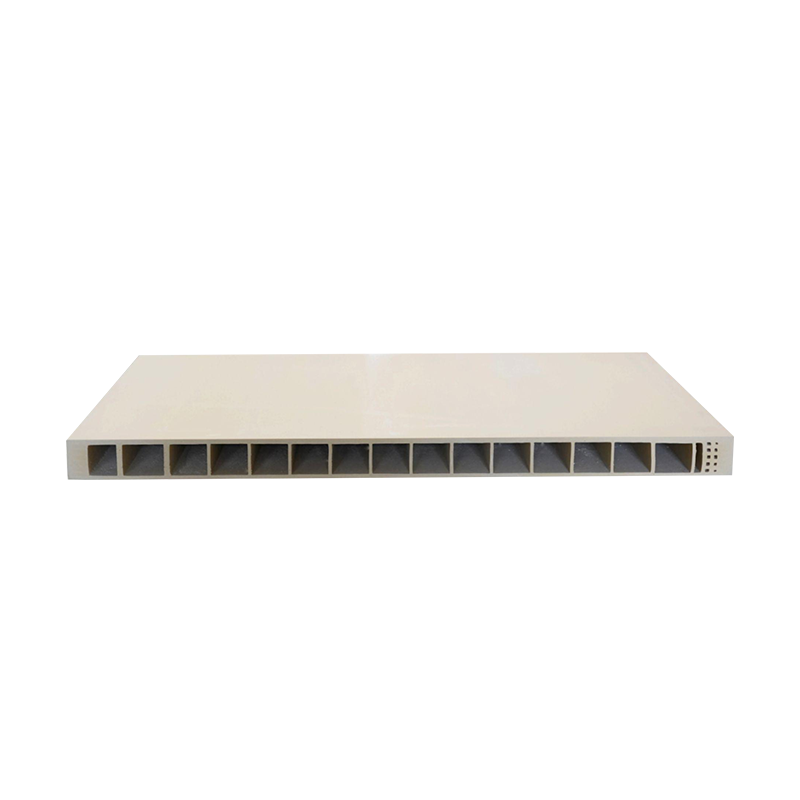The shift in construction and interior finishing from conventional materials to high-performance composites is a defining trend of the 21st century. At the forefront of this evolution is the WPC Door Panel (Wood-Plastic Composite), a product engineered to address the inherent weaknesses of traditional wooden doors while maintaining a premium aesthetic. Far from being a mere substitute, the WPC panel has established itself as a superior solution, backed by a sophisticated manufacturing process and compelling technical specifications.
The Engineering Behind the WPC Door Panel
The robust performance of a WPC Door Panel is directly linked to its composition and advanced manufacturing technique.
Composition: A Synergy of Materials
A typical WPC formulation blends:
- Wood Fibers/Flour (30-60%): Provides natural texture, rigidity, and bulk. This wood waste component contributes significantly to the material’s eco-friendly profile.
- Thermoplastics (40-70%): Usually PVC (Polyvinyl Chloride), PE (Polyethylene), or PP (Polypropylene). The plastic component encapsulates the wood, offering the core protection against environmental degradation.
- Chemical Additives (Stabilizers, Foaming Agents): These are crucial for optimizing performance, providing UV resistance, fire retardancy, color stability, and creating the lightweight, closed-cell foamed structure that enhances insulation and reduces weight.
Precision Manufacturing: The Extrusion Process
WPC door panels are predominantly produced using the extrusion method, a precise process that ensures material homogeneity and dimensional accuracy:
- High-Speed Mixing: Raw materials are meticulously measured and blended in a high-speed mixer, often with temperature control, to ensure the wood fibers are uniformly coated by the plastic resin and additives.
- Conical Twin-Screw Extrusion: The compound is fed into a specialized twin-screw extruder. Heat and pressure melt the plastic, which is then forced through a custom die (mould) to shape the profile of the door panel, which is often hollow or semi-hollow for weight reduction and thermal insulation.
- Calibration and Cooling: The hot profile passes through a calibrating unit to fix its exact dimensions before being rapidly cooled in a water bath or cooling unit, ensuring the panel remains dimensionally stable and prevents warping.
This highly controlled process results in a monolithic, seamless panel that is fundamentally different from layered or veneered wood products.
WPC Door Panels in the Global Market: Trends and Outlook
The market for WPC products, including WPC Door Panels, is experiencing robust growth globally, particularly in the Asia-Pacific region. Current trends highlight its evolution from a ‘cheap alternative’ to a high-performance solution:
- Sustainability Driver: The market is being fueled by stringent green building codes and consumer preference for eco-friendly materials that utilize recycled content. Many WPC doors now boast 95% recycled plastic and wood fiber content.
- Smart Integration: Manufacturers are beginning to integrate advanced features, showcasing “Smart WPC Doors” with embedded IoT sensors for security and energy management, aligning with the growing smart home market.
- Aesthetic Versatility: Advancements in surface technology, such as high-definition thermal transfer, lamination, and embossed finishes, allow the WPC panel to flawlessly replicate the look and feel of high-end wood species, expanding its use in luxury and decorative interior projects.
In conclusion, the WPC Door Panel embodies a successful marriage of technology and material science. Its technical specifications—especially its unparalleled water resistance and durability—solve decades-old construction problems. As a sustainable, versatile, and high-performance product, the WPC panel is poised to remain a dominant and essential material in the future of modern construction.








